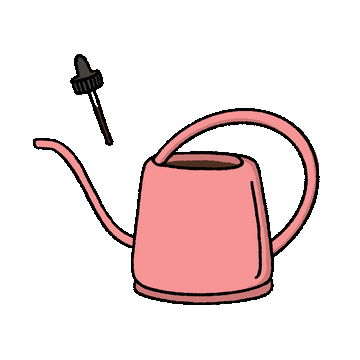Indoor gardening is a joy, providing a beautiful, calming natural environment within the confines of your home. However, it does come with its fair share of challenges, and one of them that we often overlook is the consequence of drainage in potted plants. Drainage holes, the little openings at the bottom of your pots, can be your best friends or your worst enemies. They are vital in keeping your indoor plants healthy, but they can also create quite a mess if not managed properly. While it may seem like a small detail, the presence or absence of drainage holes can greatly impact the health and well-being of your indoor plants.
So why exactly are drainage holes so important? Well, let's first understand what happens to a plant when it is deprived of proper drainage. When water is poured into a pot, it needs to have somewhere to go once it reaches the bottom. If there are no drainage holes, the water will simply collect at the bottom of the pot and saturate the soil. This can lead to root rot, which is a serious threat to plant health.
But why does root rot occur? It's because when soil becomes overly saturated with water, the roots are deprived of oxygen. This can cause them to suffocate and eventually die, leading to a dying or dead plant. Additionally, without proper drainage, excess water can also bring about fungal or bacterial growth in the soil, further harming the plant.
This is where potting mix comes into play. A good potting mix will not only provide nutrients for your plants, but also have proper drainage properties. It should be well aerated and allow for excess water to drain out easily. However, even the best potting mix won't be able to compensate for a lack of drainage holes.
But hold on, before you put on your DIY hat and start drilling holes in all your pots, let's talk about the potential downside - the mess. We've all been there - watering our beloved indoor plants and then noticing the water trail running down the side table and onto the carpet. Not ideal, is it? Fear not, fellow plant lovers, there are ways around this.
Enter the humble drip tray. Placing your pot on a drip tray or saucer can catch any excess water that drains out, protecting your furniture and floors. You can also opt for pots with built-in drip trays for a fuss-free solution. Just remember to empty the tray regularly to prevent your plant from sitting in water.
If you find yourself with a beautiful pot without drainage holes, all is not lost. The go-to method used to be creating a drainage layer at the bottom with pebbles or broken terracotta pieces before adding the potting mix. The idea was that this layer would capture the water and prevent the roots from sitting in the excess moisture. This can provide a space for excess water to go in the short term, but obviously is only stop gap solution as the water will remain in the base of the pot without draining and eventually rise up to the soil level of your plant. Instead, a better idea is to keep the plant in its plastic nursery pot and simply use the pot with no drainage holes as a cover. When you water the plant, you can simply lift it out and place it in the sink or outside, then back in its sleeve once its drained off.
For those who are willing to take an extra step, self-watering containers can be a great option. They have a reservoir to hold excess water, which the plant can use over time. However, these require careful monitoring to ensure the reservoir doesn't become a breeding ground for bacteria or fungi.
In conclusion, while it is possible to manage plants in pots without drainage holes, nothing beats well-drained soil for your plants' health. To balance proper watering and cleanliness, a pot with drainage holes paired with a drip tray is your best bet. And remember, a happy plant makes for a happy plant parent!



Leave a comment